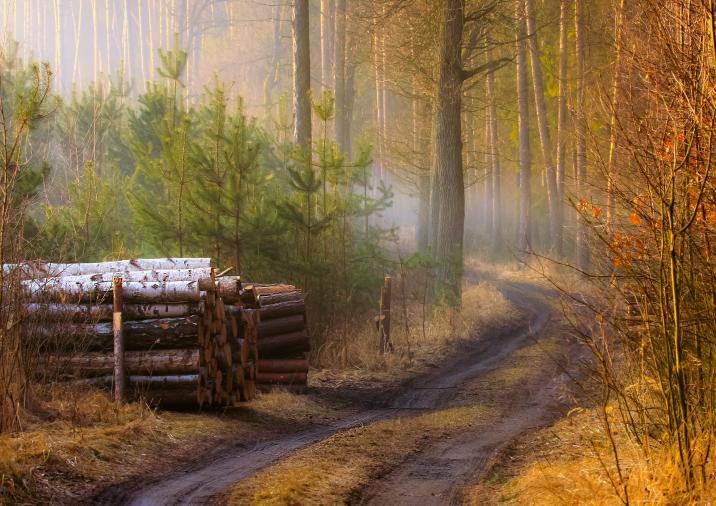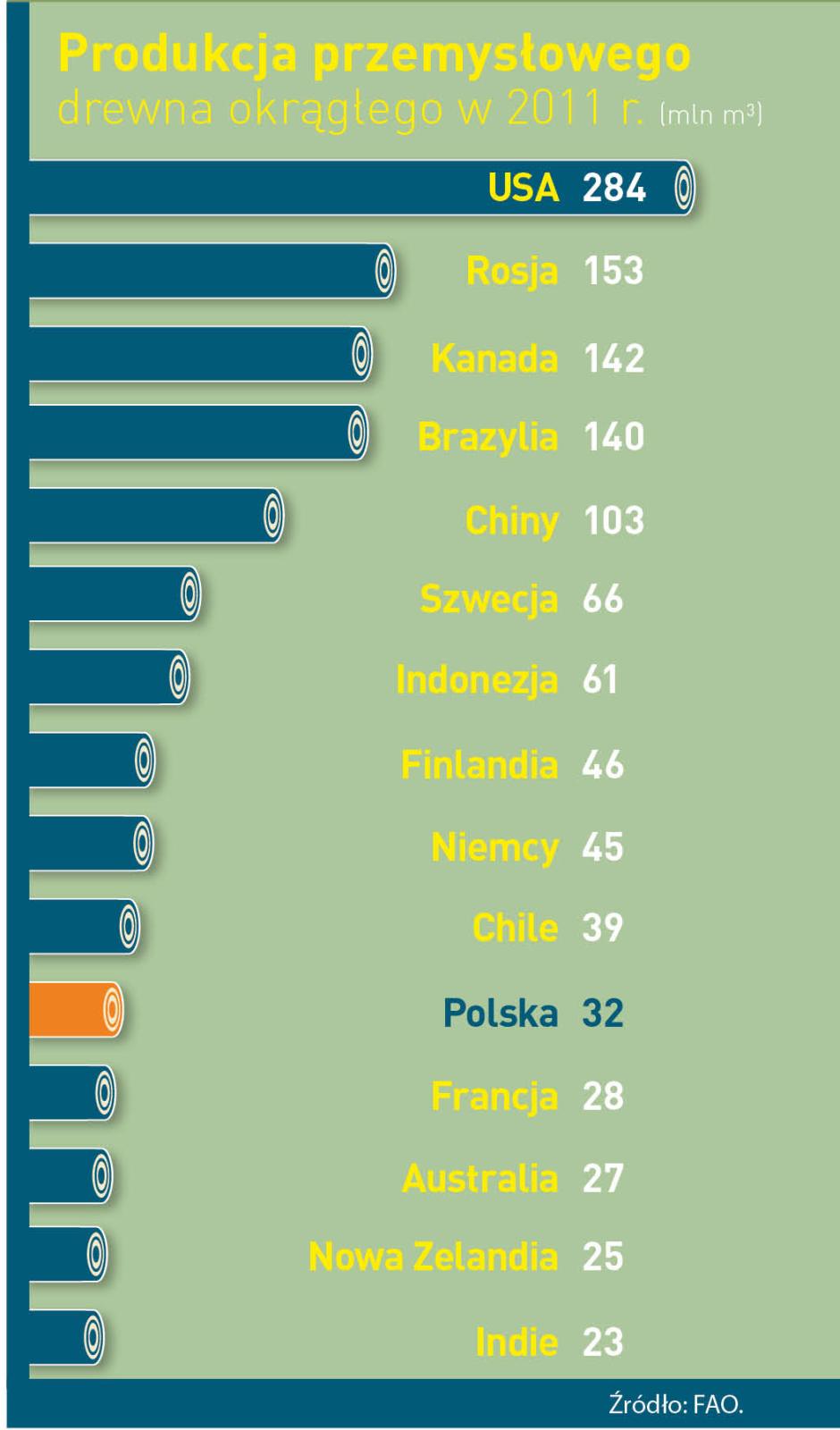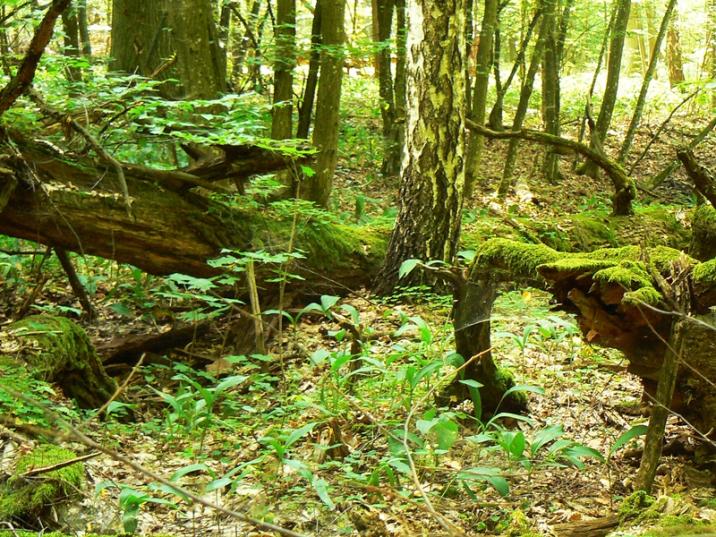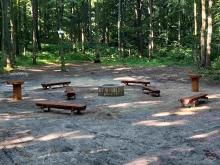 Asset Publisher
Asset Publisher
Polish hit
Polish products made of wood – furniture, window and door frames, yachts or paper and packages – these are real hits of the market.
Our country is the is the 10 largest producer of furniture and the 4 largest furniture exporter in the world. Wood industry sells abroad goods of its approximate value of 45 million zl annually, what constitutes 10 % of the whole Polish export. The measurement of the essential role of forestry and timber based sector in our management is that, it works out about 2 % of GDP (Gross Domestic Product). Not only it gives work to thousands of people, but it is also an engine of investment and of development of innovative technologies. From the beginning of transformation, it drew foreign capital of its value over 30 million zl.
Forest gives work
The State Forests belong to the leading group of employers in Poland. However, both forest and timber provide for workers with several thousand of Forestry Services Companies, which within the contract of mandate deal with, among others, planting trees and their nursing, wood logging and its transportation. And above all cooperate with people employed in several dozen thousand of companies creating wood and furniture industry and paper manufacture. Summing up, it gives as many as 375 thousand of Poles altogether. Statistically, every hundred inhabitant of our country works in the sector connected with forestry and wood processing.
Among private companies of forestry and timber based sector, there are also big companies with the share of foreign capital , and big and medium sized indigenous companies, but 9 of 10 companies in this sector are small plants employing less than 10 people. These are often family companies, cultivating multigenerational traditions connected with forestry and working in less developed regions of the country. There, forestry and wood industry, as well as agriculture constitute the basis of maintaining hundred thousand of families. As many as 600 % of all working places in the forest and wood based sector are located within rural areas.
Forest and wood based sector works out about 2 % of Polish GDP (Gross Domestic Product).
- 2 % of Polish GDP works out forest and wood based sector .
- Poland takes 4 place as the largest furniture exporter and 10 place as the largest producer of furniture.
- 50 % of paper and 9 of 10 pieces of furniture produced in Poland is exported abroad
- The value of annual export of Polish goods of wood and furniture industry and paper manufacture equals 45 billion zl (it is 10 % of the whole export).
- 30 billion zl , as direct foreign investments, have been drown since 1990 by Polish wood based sector (5,5 % of all).
- 100 kg of paper is used annually by statistic Pole (an average of UE is 160 kg, for USA – 230 kg).
Source: E. Ratajczak „Potencjał gospodarczy przemysłów opartych na drewnie i perspektywy ich rozwoju (Economic performance of wood – based industries and perspectives of their development)", GUS, Warszawa 2012.
 Asset Publisher
Asset Publisher
Ekosystemy referencyjne i lasy HCVF - Konsultacje społeczne
Ekosystemy referencyjne i lasy HCVF - Konsultacje społeczne
Nadleśnictwo Chełm ogłasza rozpoczęcie konsultacji społecznych identyfikujących lasy o szczególnych walorach przyrodniczych HCVF (Hight Conservation Vaule Forests) oraz ekosystemy referencyjne zgodnie ze standardami FSC adoptowanymi do warunków Polski.
Regionalna Dyrekcja Lasów Państwowych w Lublinie posiada certyfikat Dobrej Gospodarki Leśnej FSC, przyznawany dla zarządzających lasami zgodnie z określonymi zasadami i kryteriami. Zasady te obejmują m. in. przestrzeganie regulacji prawnych danego kraju, racjonalne czerpanie korzyści z lasu, ochrony przyrody i bioróżnorodności leśnej, ochrony lasów o szczególnej wartości jak i przestrzegania zasad współpracy z lokalną ludnością. W celu osiągnięcia zgodności ze standardami FSC jesteśmy zobowiązani na terenie Nadleśnictwa Chełm do wyznaczania lasów o szczególnych walorach. Na wskazanych obszarach działania gospodarcze będą dostosowane do wymogów ochrony wartości takich lasów.
Kategorie lasów HCVF, które występują w Nadleśnictwie Chełm:
HCVF 1. Lasy posiadające globalne, regionalne lub narodowe znaczenie pod względem koncentracji wartości biologicznych
HCVF 1.1. Obszary chronione
HCVF 1.1. a Lasy w rezerwatach przyrody
HCVF 1.1.b Lasy w parkach krajobrazowych
HCVF 1.2. Ostoje zagrożonych i ginących gatunków
HCVF 3. Obszary obejmujące rzadkie, ginące lub zagrożone ekosystemy
HCVF 3.2. Ekosystemy rzadkie i zagrożone w skali Europy, lecz w Polsce pospolitsze i występujące wielkoobszarowo, stanowiące ważne obszary gospodarki leśnej
HCVF 4. Lasy pełniące funkcje w sytuacjach krytycznych
HCVF 4.1. Lasy wodochronne
HCVF 6. Lasy kluczowe dla tożsamości kulturowej lokalnych społeczności
Zarządzający lasami o dużej powierzchni, zgodnie z certyfikacją FSC powinni wyznaczać, zachowywać i zaznaczać na mapach przykłady istniejących w krajobrazie ekosystemów (tzw. ekosystemy referencyjne Representative Sample Areas).
Lasy o szczególnych walorach przyrodniczych są wyznaczane w oparciu o „Kryteria wyznaczania lasów o szczególnych walorach przyrodniczych w Polsca" autorstwa Związku Stowarzyszeń „Grupa Robocza FSC-Polska". Informacje o certyfikacji są dostępne na stronie : http://pl.fsc.org/.
Wybór powyższych powierzchni powinien podlegać konsultacjom społecznym. W związku z powyższym Nadleśnictwo Chełm zaprasza wszystkie zainteresowane osoby do składania uwag. Osobą do kontaktu w sprawie identyfikacji i kategoryzacji lasów HCVF oraz ekosystemów referencyjnych jest Marta Socha tel. 694 418 006, e-mail: marta.socha@lublin.lasy.gov.pl.










